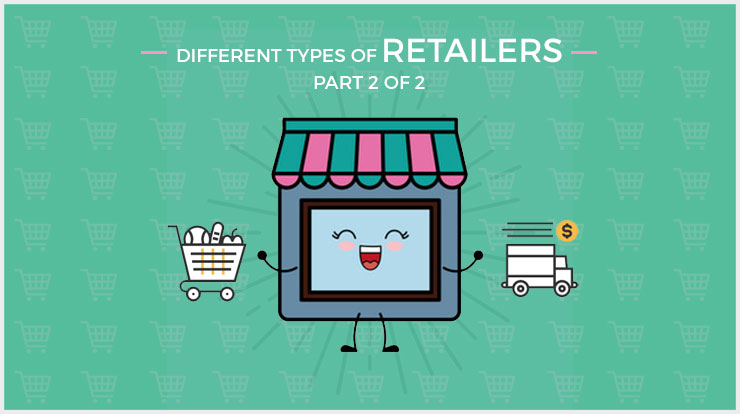
If you are beginning to learn marketing, one of the most basic things you need to learn is this - what is a market? Once you are clear with that, you should also know about the classification of markets.
It is one of the first couple of questions that you would encounter in a Marketing 101 class. One would be “What is Marketing?” and while you will be at it, the next one is likely to be “What is a Market?”.
Therefore, in this article, I briefly discuss with you what exactly is a market and what is the classification of markets.
There would be different classification of markets in Traditional and Modern Markets. In this article, I will discuss only the classification of traditional markets.
In a subsequent article, I will tell you about the classification of modern markets.
Markets have existed since the first human civilization where people would barter their goods and services. As civilizations have evolved, so have the markets. Markets continue to grow and evolve from a place where people would barter their goods and services to selling goods and services online.
Let's get on with the classification of traditional markets.
What is a Market?
The word ‘market’ originates from the Latin word ‘marcatus,’ which can be translated into a place where the business is conducted. For a common man, the picture of market would be of a place where they can buy and sell goods and service.
However, for different kind of people a market can have a much broader meaning. It can be referred to as a region wherein buyers and sellers connect for buying and selling goods and services at a mutually agreeable value.
The meaning of market in economics is similar. EconomicsDiscussion.net suggests that “market is defined as a system under which buyers and sellers negotiate the price of a product, settle the price, and transact their business.”
Also Read: But really, what does Marketing mean?
Criteria for Classification of Markets – Traditional Markets
We can classify markets on various parameters, which include region, time, nature of transaction, regulation, the volume of a business transaction, nature of goods and services, competitive nature, and conditions of demand and supply.
This, as I mentioned, is the traditional approach of classification of markets.
Traditionally, we see markets as a venue where buyers and sellers interact towards buying and selling of goods and services. And as discussed most economists define a market as a place where a group of buyer and sellers meet to transact over a specific product or service.
Here is the traditional classification of markets.
1. Classification of Market - based on Geographic Area
A geographic area can be classified as local, regional, domestic and international market.

Local markets are confined to a small and local region which mostly deal in perishable and semi-perishable products such as grains, fruits and vegetable, meat, milk and another type of consumer goods and services.
Regional markets can cover a much wider area compared to a local market. It consists of a district, a state or a group of states. This includes consumer durables and non-durables goods, agricultural produce and industrial products.
National markets can cover an entire country involving consumer durables and non-durables goods, metals, agricultural produce, forest products, industrial goods and a wide range of natural and man-made products and services.
International markets involve the movement of goods and services across international borders, and the entire world is treated as a single marketplace. With the advancement of communication, transportation, storage, and packaging technologies, a wide array of goods and services can be sent across from one country to another.
2. Classification of Market - based on Time
We can also classify markets based on time. There is mainly a short-period and a long-period market.

As the name suggests, short-period markets are generally for a shorter period of time which can range between hours or a month. These are mainly for perishable goods.
Long period markets can last anywhere between a few weeks to a few years. These are generally for consumer and industrial goods and services which do not perish easily during storage.
3. Classification of Market - based on Transaction
We can also classify markets based on the nature of the transaction. These includes ‘spot’ and ‘future’ markets.

Spot markets can be referred to as a market wherein transactions take place on the spot, i.e., the payment and delivery of goods and services take place immediately.
Whereas, Futures markets refer to a market wherein the payment, the delivery of goods or services or both takes place on a future predetermined date.
4. Classification of Market - based on Regulations
We can also classify markets based on regulations, and as a result of this, we have regulated markets and non-regulated markets.

A Regulated market can be referred to as a market wherein business transactions take place as clearly defined rules and regulations about quality, quantity, price, and other factors involved in the transaction.
For instance, stocks and shares are bought and sold as per rules and regulations laid down by SEBI.
Unregulated markets are free markets wherein no rules and regulations exist, and even when these exist, these can be changed and altered as agreed upon by the parties involved in the transaction.
5. Classification of Market - based on Volume
We can also classify markets based on the volume of business, which can mainly be classified as the retail and wholesale market.

In Retail markets, goods and services are bought and sold in small quantities, and most consumers involved in the retail market are end-user consumers.
Whereas, in Wholesale Markets, the volume of goods and services bought and sold is high and the buyers most buyers involved in the wholesale market include businesses, manufacturers and traders.
Also Read:
What are the different types of Retailers? (Part 1 of 2)
What are the different types of Retailers? (Part 2 of 2)
6. Classification of Market - based on Nature of Goods and Services
We can also classify markets based on goods and services transacted in the market place. These can be mainly classified as commodity and capital markets.

Commodities markets deals in a wide range of goods and services which includes agricultural products, precious metals, consumer durables, industrial goods, consumer services, etc.
Capital markets are markets for finance. It can be further divided into money market which involves borrowing and lending of money, stock, and securities market involving transaction of stock, debentures, foreign exchange and other financial and investment products and instruments.
7. Classification of Market - based on Nature of Competition
We can classify markets based on competitive forces existing within a market place. We can mainly classify markets as perfect and imperfect markets.

Perfect markets can be classified as markets that have large numbers of buyers and sellers, a transaction involving homogeneous products and services prevailing based on the lowest price, the buyers and seller having knowledge about the market and businesses and consumers having free entry and exist within a market.
Imperfect markets involve selling similar, yet not identical products and different prices. These markets also involve certain barriers on the movement of goods and services and lack of perfect knowledge about the market and the products on the part of the buyers and sellers.
8. Classification of Market - based on Demand & Supply
We can also classify markets based on demand and supply, i.e., a buyers or seller's markets.

A Buyers’ market means that the buyers have a strong position within a marketplace in terms of dictating the price as supply exceeds demand.
A Seller’s market implies that the seller is in a commanding position due to lack of competition and demand are exceeding supply.
Conclusion
Here in this article, I shared with you the classification of markets and I focused only on Traditional Markets. Many of you would be familiar with these markets and you would have imagined a few examples of each of them while reading the article.
In fact, soon I will be updating this article with examples for each of these types of markets so that it becomes clearer and easier to understand. In the next article, I will share with you the Classification of Markets of Modern Markets.








I am a private money lender that give out fast cash no collateral required. all cash amounts and currencies, if interested TO started no matter your location (WhatsApp) number +918131851434 Mr. Damian Sumiti